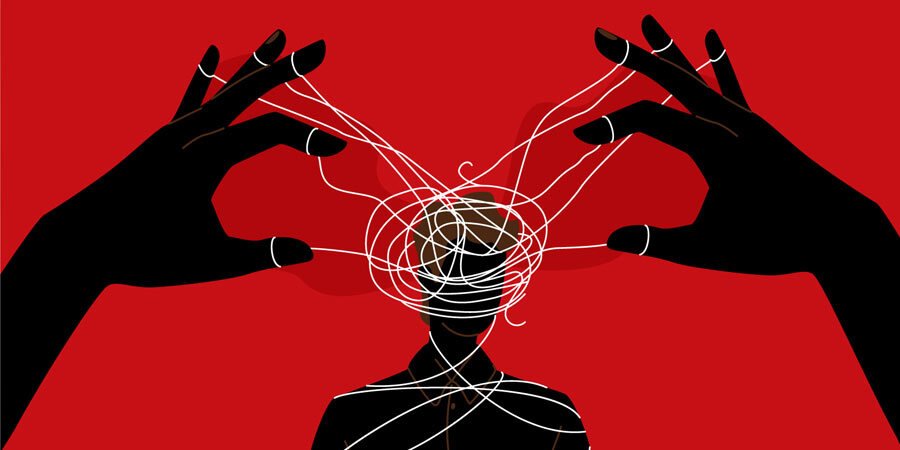BDSM has moved beyond taboo into research labs and psychology journals. Scientists now study how power, trust, and sensation affect the brain. What was once whispered is now analyzed openly, revealing that BDSM is not about pain—it’s about complex neurological responses. Tools like Bondage Hoods trigger sensory focus and heightened awareness, teaching us how the human mind connects physical sensation with emotional pleasure.
The Brain’s Response to BDSM
Endorphins and Dopamine
During a BDSM scene, the brain releases endorphins, natural chemicals that reduce pain and increase pleasure. Dopamine, the “reward chemical,” floods the system, creating feelings of excitement and satisfaction. This combination explains why participants often describe calmness and euphoria instead of discomfort.
The Role of Trust
Trust activates the brain’s limbic system—the area responsible for emotional bonding. The dominant-submissive dynamic depends on deep connection. In scenes like Sleepsack BDSM, where one partner is completely restrained, this trust strengthens emotional awareness. The submissive’s vulnerability and the dominant’s responsibility create a psychological bond similar to meditative focus or athletic flow.
The Psychology of Power and Surrender
Why the Mind Finds Control Appealing
BDSM is less about control and more about controlled surrender. Neuroscientists suggest that relinquishing power can quiet overactive thoughts and anxiety. For many, submission brings relief from stress and decision fatigue.
How the Dominant Brain Responds
Dominants often experience heightened focus. Their prefrontal cortex—responsible for decision-making—stays active while the emotional brain releases oxytocin, the bonding hormone. This dual activation fosters both leadership and empathy, turning scenes into coordinated emotional exchanges.
Sensory Play and Brain Activation
How the Body Feeds the Mind
The skin is covered with millions of nerve endings that send continuous feedback to the brain. Gentle or intense touch activates different neural pathways. This explains why certain sensations, when delivered in a safe environment, can feel pleasurable instead of painful.
A BDSM Posture Collar, when used safely, heightens awareness of body position. By restricting unnecessary movement, it shifts focus inward. The wearer becomes more conscious of breathing, heartbeat, and surrounding sound. Psychologists note that such controlled sensory awareness can induce a state similar to mindfulness.
The Brain Chemistry of Aftercare
Emotional Recovery and Connection
Aftercare—the emotional period following a BDSM session—triggers oxytocin and serotonin release. These chemicals promote trust, affection, and emotional balance. It’s why partners often feel calm and connected afterward.
Physical and Psychological Reset
Endorphin levels stabilize slowly, causing a brief “drop” in mood for some participants. Proper aftercare, including hydration and reassurance, helps the brain recalibrate. Neuroscientists compare it to the cool-down phase after exercise, where recovery and reflection strengthen the emotional connection.
Research and Real-World Observations
Scientific Findings
Modern studies from neuroscience labs confirm that BDSM practitioners experience altered brain states similar to meditation. Pain processing centers and pleasure circuits often overlap, allowing the body to interpret intense sensations as emotionally rewarding rather than harmful.
Ethical Design and Safe Practice
Ethical manufacturers such as The Leather Impressions prioritize body-safe materials and secure fittings. This aligns with the psychological principle of “safety as arousal.” When participants feel safe, their brains release more oxytocin and endorphins, deepening trust and satisfaction.
The Social and Cultural Shift
From Taboo to Study
BDSM is no longer viewed as deviant behavior. Universities, therapists, and health professionals now recognize it as a legitimate form of adult expression. Public understanding has evolved from stigma to acceptance, supported by ongoing research and open conversation.
Emotional Growth and Awareness
Practicing BDSM responsibly encourages communication, empathy, and self-discovery. It helps individuals understand boundaries, desire, and emotion through real connection. The brain, far from being damaged by BDSM, often benefits from its structured intimacy.
Final Thoughts
BDSM reveals how closely pleasure, trust, and the brain are linked. Science shows that sensory play activates the same systems responsible for emotional connection and stress relief. It’s not just physical—it’s neurological, emotional, and deeply human.
When practiced with safety and care, BDSM becomes an exploration of self-awareness, not danger. The mind learns how to translate sensation into connection and control into calmness.
Frequently Asked Questions
How does BDSM affect brain chemistry?
BDSM releases endorphins and dopamine, creating pleasure and relaxation. These chemicals help explain the sense of euphoria and connection felt during and after play.
Why do some people find BDSM calming?
Submission and structure reduce stress by quieting mental noise. The focus on trust and physical sensation can create a meditative, grounding state.
Does pain in BDSM always mean pleasure?
Not always. The brain interprets sensation differently in safe, trusting settings, often converting pain signals into pleasure through endorphin release.
What is the purpose of aftercare in BDSM?
Aftercare stabilizes mood and reinforces emotional connection. It helps both partners relax, discuss the experience, and maintain psychological balance.
How does science view BDSM today?
Modern research supports BDSM as a consensual, healthy form of adult intimacy. Studies show positive emotional and neurological effects when practiced safely and responsibly.


